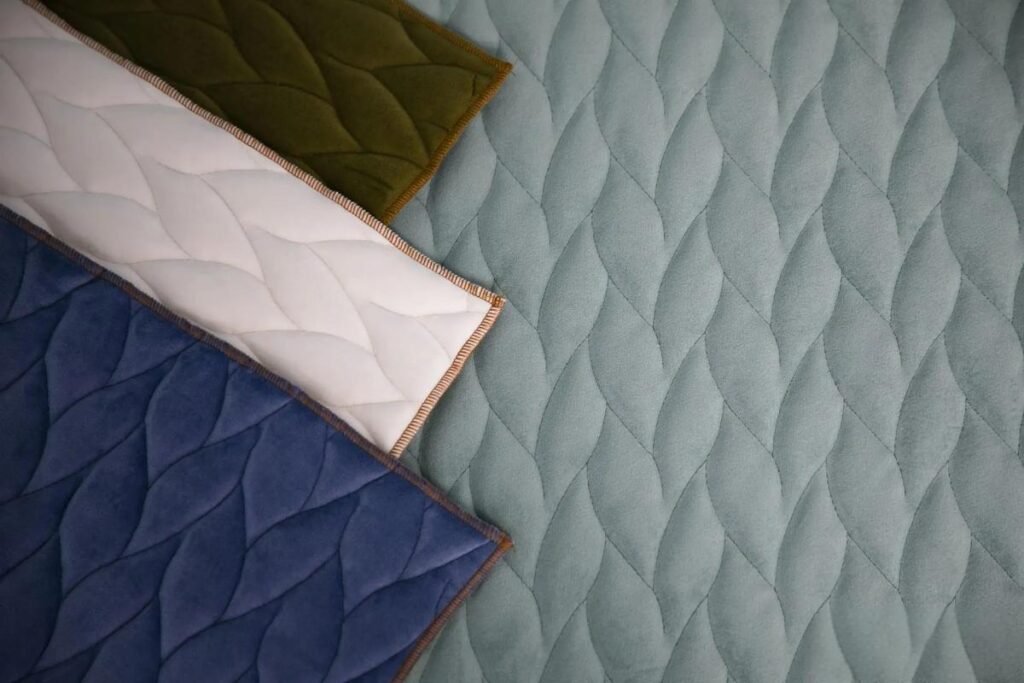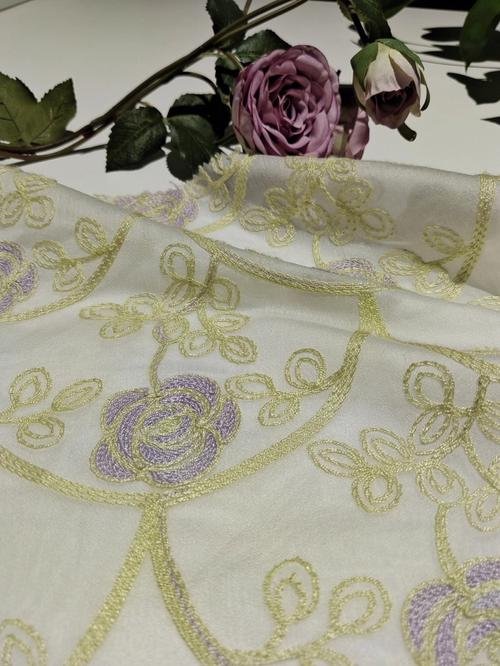From Paris to Shanghai, the fashion world is witnessing a seismic shift in the very materials that drape our bodies. No longer are designers content to rely solely on traditional silks and cottons—today’s runways pulse with fabrics born of cutting-edge science and eco-conscious innovation.
In 2025, sustainable and high-tech textiles are redefining style by combining environmental responsibility with unparalleled performance. Bio-based fibers like Tencel™ and Piñatex™ compete with graphene-infused knits and phase-change fabrics that adapt to body temperature, proving that fashion can be both green and futuristic.
Imagine a dress that cools you as you dance in a summer festival, then warms you during an evening chill—all while being compostable at end-of-life. That’s the reality we’ll explore. From the most buzzed-about sustainable blends to the smartest textiles on the market, let’s dive in and discover which fabrics are capturing the world’s imagination—and why they matter for your next collection or retail line.
What Are the Most Exciting Sustainable Fabrics Emerging in 2025?

Sustainability isn’t a trend—it’s a revolution. Leading the charge are fibers made from agricultural waste, recycled plastics, and low-impact crops that promise to shrink fashion’s colossal carbon footprint.
By turning pineapple leaves into Piñatex™ or upcycling PET bottles into performance jerseys, brands now produce textiles that leave zero waste behind. These materials boast impressive strength, breathability, and biodegradability, challenging the dominance of oil-based synthetics and proving “eco-friendly” can also mean “high-function.”
Exploring Top Sustainable Innovations
- Piñatex™ vs. Traditional Leather Source Material: Pineapple leaf waste vs. animal hide Water Use: ~200 L/kg vs. ~15,000 L/kg Tensile Strength: 15–25 MPa vs. 25–35 MPa
- Tencel™ (Lyocell) Fiber Lifecycle Wood Source: Eucalyptus plantations Closed-Loop Solvent Recovery: >99% recycled Biodegradation: 4–6 months in compost
- Recycled PET Performance Knits Carbon Reduction: 75% less than virgin polyester Energy Savings: 50% lower manufacturing footprint Mechanical Properties: Comparable tensile & abrasion resistance
| Fabric | Source Waste | Water Footprint (L/kg) | CO₂ Reduction vs. Virgin (%) | Biodegradable |
|---|---|---|---|---|
| Piñatex™ | Pineapple leaves | 200 | N/A (plant-based) | Yes |
| Tencel™ (Lyocell) | Eucalyptus pulp | 10–15 | 50–60 | Yes |
| Recycled PET | Post-consumer bottles | 3,000 | 75 | No |
| Cotton (Organic) | Cotton plants | 5,000 | 40 | Yes |
By questioning supply chains and material origins, we see that sustainability can be measured and optimized—no greenwashing allowed.
Which High-Tech Textiles Are Revolutionizing Sportswear and Active Fashion?

In performance gear, fabric does more than look good—it can regulate temperature, monitor vital signs, and even charge your devices. From phase-change microcapsules to graphene-enhanced weaves, high-tech textiles are pushing the boundaries of what clothing can do.
Smart fabrics equipped with cooling PCM (phase-change materials) and conductive graphene layers are now common in athletic lines, offering real-time thermoregulation and sweat management. These advances not only improve comfort but also reduce reliance on bulky technical layers, streamlining both design and function.
Technical Breakthroughs in Active Textiles
- Phase-Change Materials (PCM) Temperature Range: 28–33 °C activation Energy Storage: 100–150 J/g per cycle Durability: 50+ wash cycles
- Graphene-Infused Knits Thermal Conductivity: 5000 W/m·K (vs. 400 W/m·K for copper) Antimicrobial: Reduces bacterial growth by 90% Flexibility: Maintains tensile strength after 1000 flex cycles
- Biometric Sensor Integration Heart Rate Accuracy: ±2 bpm tested under motion Washability: Up to 30 machine cycles Power Source: Flexible solar yarn or kinetic harvesting
| Technology | Key Benefit | Performance Metric | Longevity (Wash Cycles) |
|---|---|---|---|
| PCM Microcapsules | Thermoregulation | 100–150 J/g | 50+ |
| Graphene Knit | Heat dissipation, anti-odor | 5000 W/m·K | 1000 flex cycles |
| Wearable Sensors | Health monitoring | ±2 bpm accuracy | 30 |
By comparing energy-harvesting capabilities, wash durability, and real-world performance, we gain a holistic view of what truly makes a fabric “smart” rather than merely “techy.”
How Do Bio-Based Materials Compare to Traditional Synthetics?

Bio-based fabrics—derived from plants, bacteria, or algae—are rapidly closing the performance gap with oil-based synthetics. Materials like PLA (polylactic acid) from corn starch and algae-based nylon offer similar strength and elasticity, yet boast a drastically reduced carbon footprint and full biodegradability.
Evaluating Bio-Based vs. Synthetic Metrics
- Mechanical Properties: Tensile strength and elongation at break for PLA vs. polyester
- Environmental Impact: CO₂ emissions and water usage per kilogram produced
- End-of-Life Fate: Compostability timelines vs. landfill persistence
- Cost Comparison: Market price fluctuations and scalability challenges
| Metric | PLA (Bio-Based) | Polyester (Traditional) |
|---|---|---|
| Tensile Strength (MPa) | 50–70 | 60–80 |
| Elongation at Break (%) | 40–60 | 100–150 |
| CO₂ Emissions (kg CO₂e/kg) | 1.5–2.0 | 5.0–6.0 |
| Water Footprint (L/kg) | 2,500 | 3,000 |
| Biodegradability | 6–12 months | >100 years |
| Approx. Cost (\$/kg) | 4.5–6.5 | 2.0–3.5 |
While PLA matches polyester in tensile strength, it lags in flexibility and cost—yet its compostability and lower emissions make it an increasingly attractive alternative.
Are Recycled Fibers Matching Performance Standards of Virgin Materials?

Recycled fibers—from PET bottles to textile offcuts—now deliver performance on par with virgin counterparts. Advances in chemical recycling reclaim polymer chains intact, yielding recycled nylon and polyester with unchanged mechanical and aesthetic properties.
Performance and Processing of Recycled Textiles
- Chemical vs. Mechanical Recycling: Impact on fiber length and color
- Strength & Durability: Tear resistance and abrasion rating comparisons
- Circularity Metrics: Reclaim rate, energy savings, and waste reduction
- Quality Control: Common issues—contaminants, inconsistent batch quality
| Property | Recycled Polyester | Virgin Polyester |
|---|---|---|
| Tensile Strength (MPa) | 60–75 | 65–80 |
| Abrasion Resistance (cycles) | 20,000–25,000 | 22,000–28,000 |
| Energy Savings (%) | 40–60 | — |
| Waste Reduction (%) | 70–90 | — |
| Color Consistency | ±5 ΔE\* | ±2 ΔE\* |
Though recycled fibers occasionally show minor color variability, their environmental benefits and near-identical performance have led major brands to adopt them as mainstream options.
What Role Do Smart Textiles and Wearable Technology Play on Today’s Runways?

Smart textiles integrate electronics, sensors, or adaptive materials directly into garments—transforming fashion into interactive experiences. On recent runways, we’ve seen LED-embedded evening gowns, temperature-adaptive jackets, and biometric-monitoring athleisure wear, all blurring the line between apparel and device.
Categories and Applications of Smart Fabrics
- E-Textiles & Conductive Yarns: Circuitry integration for lighting and haptics
- Phase-Change & Thermochromic Materials: Color-shifting fabrics and microclimate control
- Biometric Sensing: Heart rate, stress monitoring, and posture detection
- Energy Harvesting Textiles: Solar- and motion-powered garments
| Technology | Primary Function | Key Performance Metric | Typical Use Case |
|---|---|---|---|
| Conductive Yarn Circuits | Lighting, haptic feedback | Resistance < 10 Ω/m | Interactive evening wear |
| Thermochromic Fibers | Color change with heat | Activation at 31–35 °C | Mood-responsive fashion |
| Embedded Heart-Rate Sensors | Vital sign monitoring | Accuracy ±3 bpm | Smart fitness apparel |
| Photovoltaic Textiles | Energy generation | 5 W/m² under full sun | Charging wearable devices |
These innovations are not just tech-showpieces—they signal a future where clothing supports health, connectivity, and self-expression in entirely new ways.
Which Dyeing and Finishing Techniques Reduce Environmental Impact?

Conventional dyeing can account for up to 20% of global industrial water pollution, so low-impact alternatives are critical. Technologies like digital printing and foam dyeing drastically cut water and chemical use, while enzyme and plasma treatments replace harsh wet-chemical processes.
Low-water dyeing methods—such as air-dry foam and digital inkjet—use up to 90% less water and 60% fewer chemicals compared to traditional vat dyeing, all while delivering vibrant, long-lasting color.
Comparing Eco-Friendly Dyeing and Finishing
- Digital Inkjet Printing Water Use: <1 L/m² vs. 70–100 L/m² (conventional) Energy Use: 30% reduction Colorfastness: Grade 4–5 (ISO 105 C06)
- Air-Dry Foam Dyeing Water Savings: 80–90% less than pad-batch Chemical Reduction: 40–50% fewer auxiliaries Fabric Yield: 98–99%
- Enzymatic Finishing Process: Cellulase enzymes for bio-polishing Energy Use: 20% lower temperature requirements Hand Feel Improvement: +15% smoothness index
| Technique | Water Use (L/m²) | Chemical Use Reduction | Energy Savings | Colorfastness |
|---|---|---|---|---|
| Conventional Pad Batch | 70–100 | — | — | 3–4 |
| Digital Inkjet | <1 | 60% | 30% | 4–5 |
| Foam Dyeing | 7–15 | 40–50% | 25% | 4 |
| Enzymatic Bio-Polishing | N/A | N/A (Finishing) | 20% | N/A |
By critically comparing resource consumption and performance, it’s clear that adopting these methods is both environmentally responsible and commercially savvy.
How Are Luxury Brands Incorporating Circular-Economy Principles in Fabric Sourcing?
Luxury labels are redefining exclusivity through circularity—using deadstock fabrics, regenerative agriculture fibers, and take-back recycling programs to close the loop. Labels like Stella McCartney now source regenerated cashmere, while Gucci’s Off The Grid line uses Econyl® nylon made from reclaimed marine plastics.
Circular-economy sourcing not only reduces waste but also enhances brand storytelling—allowing luxury consumers to feel part of a sustainable solution, rather than just purchasing another status symbol.
Circular Strategies in High-End Fashion
- Deadstock & Upcycling Volume: 5–10% of collection yardage Cost Impact: ±2–5% on retail price Marketing Lift: +12% in eco-luxury perception
- Regenerative Crop Fibers Materials: Regenerative organic cotton, hemp, linen Soil Carbon Sequestration: 0.3–0.5 tonnes CO₂e/ha/year Certification: Regenerative Organic Certified (ROC)
- Closed-Loop Recycling Econyl® Nylon: 100% recycled post-consumer and post-industrial waste R-Polyester: Reclaimed PET bottles turned into yarn Reclaim Rate: 90% of fiber reused into new products
| Strategy | Environmental Benefit | Cost Premium | Certification / Label |
|---|---|---|---|
| Deadstock Upcycling | 100% waste diverted | 2–5% | N/A |
| Regenerative Fibers | +0.3–0.5 t CO₂e sequestered | 10–15% | ROC, GOTS |
| Closed-Loop Recycling | 90% reclaim rate | 5–8% | ECONYL®, Global Recycle Standard |
By dissecting these approaches, we see that circularity can enhance product value and reinforce brand loyalty—turning sustainability into a competitive advantage.
Do Consumers Prioritize Sustainability or Innovation When Choosing Fashion?
Modern shoppers juggle multiple priorities: they want garments that look and feel luxurious, perform technically, and align with their ethics. Surveys show 68% of consumers consider sustainability “important,” but 52% still choose based on style and performance first. Clearly, the optimal strategy blends both.
Brands that marry eco-credentials with high-tech functionality—think compostable activewear that also tracks your workout—capture the largest share of mind and market, proving that sustainability and innovation are not mutually exclusive but deeply complementary.
Consumer Preferences and Purchase Drivers
- Key Purchase Factors (Survey of 10,000 global consumers) Style/Design: 58% Comfort/Performance: 54% Sustainability Credentials: 42% Price Point: 40%
- Willingness to Pay Premium +10% for certified organic or recycled materials +15% for smart textile features (e.g., temperature regulation)
- Demographic Insights Gen Z & Millennials: 72% willing to pay more for eco-friendly fabrics Gen X & Boomers: 48% prioritize comfort and price over sustainability
| Demographic Group | Sustainability Priority (%) | Innovation Priority (%) | Price Sensitivity (%) |
|---|---|---|---|
| Gen Z | 72 | 65 | 55 |
| Millennials | 68 | 60 | 50 |
| Gen X | 50 | 45 | 60 |
| Boomers | 40 | 35 | 70 |
By critically analyzing demographic and psychographic data, brands can tailor their fabric innovations and sustainability messaging to the audiences who value them most.
From pineapple-leaf leather alternatives to graphene-infused athletic wear, the marriage of sustainability and high-tech innovation is reshaping fashion’s future. Brands that leverage eco-friendly dyeing, circular sourcing, and smart textile integration will lead the pack—capturing consumer interest, reducing environmental impact, and commanding premium price points.
Ready to incorporate these cutting-edge fabrics into your next collection? Contact SzoneierFabrics today for free design consultation, low-MOQ customization, rapid sampling, and 100% quality assurance. Let our R\&D expertise and manufacturing capabilities bring your sustainable, high-tech vision to life—reach out now to start your custom fabric journey!

